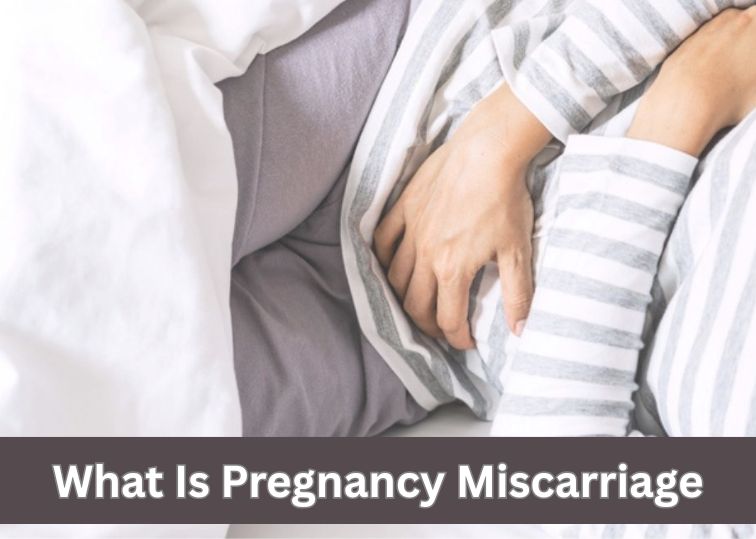Pregnancy Miscarriage: Causes, Symptoms, Management, and Recovery
A miscarriage, or spontaneous abortion, refers to the natural termination of pregnancy prior to the fetus reaching the point of viability, typically regarded as before 20 weeks gestation, and is along the most prevalent complications of early gestation, occurring about 10-20 % of known pregnancies. The majority of early gestation losses are not attributable to the actions or inactions of the individuals involved, although, from the point of view of the concerned individuals, each episode is traumatic. An appreciation of the causative factors, signs and appropriate management is essential in helping families deal with, and ideally, arrive at future pregnancies which they can sustain.
1. Understanding Miscarriage
A miscarriage occurs when pregnancy tissues are expelled after the embryo or fetus stops growing; this can happen any time during the first 13 weeks of pregnancy, the first trimester is most common, however, some women experience very early miscarriages and mistake them for a heavy menstrual period. While all are emotionally the same, any pregnancy loss occurring after 20 weeks is termed a stillbirth.
2. Causes of Miscarriage
In most cases, miscarriage results from chromosomal abnormalities in the developing embryo — genetic errors that prevent normal development. These abnormalities are random and not inherited from the parents.
However, other factors can contribute to miscarriage:
a. Genetic and Chromosomal Causes
- Abnormal number of chromosomes in the embryo (e.g., trisomy or monosomy).
- Most common in first-trimester miscarriages.
- Usually one-time events, not recurring patterns.
b. Maternal Health Conditions
- Uncontrolled diabetes or thyroid disease.
- Polycystic ovarian syndrome (PCOS).
- Autoimmune disorders (e.g., lupus, antiphospholipid syndrome).
- Hormonal imbalances, especially low progesterone levels.
- Uterine abnormalities such as fibroids, septate uterus, or scar tissue.
c. Infections
Certain infections can interfere with fetal development or implantation, including:
- Rubella (German measles)
- Listeriosis
- Toxoplasmosis
- Chlamydia or gonorrhea
- Cytomegalovirus (CMV)
d. Lifestyle and Environmental Factors
- Smoking, excessive alcohol, or drug use
- Exposure to harmful chemicals or radiation
- Obesity or severe undernutrition
- High caffeine intake
e. Age
Miscarriage risk increases with maternal age:
- Around 15% for women under 35
- 20–25% for women aged 35–39
- 35–50% for women over 40
f. Cervical and Placental Problems
- Cervical insufficiency: a weak cervix that opens too early.
- Placental insufficiency: when the placenta fails to provide nutrients and oxygen to the fetus.
3. Types of Miscarriage
Miscarriages can present in different forms, each with specific medical implications:
- Threatened miscarriage: Vaginal bleeding occurs, but the cervix is closed and the condition might be improved with some rest.
- Inevitable miscarriage: The cervix opens, and there is no chance of stopping the miscarriage.
- Incomplete miscarriage: some of the pregnancy tissues have left the uterus, but some are still remaining.
- Complete miscarriage: Everything has left the uterus and the bleeding has stopped on its own.
- Missed miscarriage: The fetus has stopped developing, and there are no symptoms, which is usually detected on an ultrasound.
- Recurrent miscarriage: Three or more are considered the gosh miscarriages in a row and this has to be worked up completely.
4. Signs and Symptoms
The most common signs of miscarriage include:
- Vaginal bleeding or spotting, which may be light or heavy.
- Abdominal cramps or back pain, similar to menstrual pain.
- Passage of fluid, clots, or tissue from the vagina.
- Sudden decrease in pregnancy symptoms, such as nausea or breast tenderness.
However, not all bleeding means miscarriage. Some women experience light bleeding in early pregnancy and go on to have healthy babies. Any bleeding during pregnancy should be reported to a healthcare provider for evaluation.
5. Diagnosis
If miscarriage is suspected, doctors use several methods to confirm it:
- Pelvic examination: To check whether the cervix is open or closed.
- Ultrasound scan: To look for a fetal heartbeat or confirm if the uterus is empty.
- Blood tests: To measure levels of human chorionic gonadotropin (hCG), which should rise steadily during a healthy pregnancy. Falling levels suggest a miscarriage.
- Tissue analysis: If tissue is expelled, it may be tested for genetic abnormalities or infection.
6. Management and Treatment
The treatment approach depends on the type and stage of miscarriage, the woman’s health, and her emotional readiness.
a. Expectant Management (Natural Passing)
Many early miscarriages complete naturally within a few weeks without medical intervention. This allows the body to expel pregnancy tissue on its own. Pain, bleeding, and emotional distress are monitored closely. Follow-up ultrasound ensures the uterus is empty.
b. Medical Management
If tissue does not pass naturally, medications like misoprostol may be prescribed to induce uterine contractions. This method is often effective within 24–48 hours and avoids surgery.
c. Surgical Management
If heavy bleeding, infection, or retained tissue occurs, a minor surgical procedure called dilation and curettage (D&C) or manual vacuum aspiration (MVA) is performed to clear the uterus safely.
After any miscarriage, women with Rh-negative blood type should receive anti-D immunoglobulin to prevent Rh incompatibility in future pregnancies.
7. Emotional and Psychological Impact
Miscarriage is not just a physical event — it carries profound emotional effects. Women and their partners may feel grief, guilt, sadness, or anger. These feelings are normal and part of the healing process.
Support strategies include:
- Counseling or therapy for emotional processing.
- Support groups for parents who have experienced loss.
- Open communication with partners and family members.
Partners also experience grief and should be included in support systems. Understanding that miscarriage is rarely preventable can help reduce self-blame.
8. Physical Recovery
Physical healing usually takes a few days to two weeks, depending on the type of miscarriage and whether medical procedures were needed. Normal menstrual cycles typically resume within 4–6 weeks.
During recovery:
- Rest adequately.
- Avoid intercourse, tampons, or douching until bleeding stops.
- Maintain good nutrition and hydration.
- Watch for signs of infection (fever, foul discharge, or heavy bleeding).
Most women can safely try to conceive again after one or two menstrual cycles, but emotional readiness varies. Doctors often recommend waiting until the woman feels physically and emotionally prepared.
9. Recurrent Miscarriages
If a woman experiences three or more consecutive miscarriages, further evaluation is needed to identify possible causes. Investigations may include:
- Genetic testing of both partners.
- Hormonal assessments for thyroid, prolactin, or progesterone imbalance.
- Ultrasound or hysteroscopy to examine uterine structure.
- Blood tests for autoimmune or clotting disorders.
Treatments depend on the findings — for example, progesterone supplements for hormonal deficiency, surgery for uterine anomalies, or anticoagulants for clotting problems.
10. Prevention and Healthy Future Pregnancies
While not all miscarriages are preventable, certain measures can support a healthy pregnancy:
- Maintain a balanced diet rich in vitamins and minerals.
- Take folic acid supplements (400–800 mcg daily) before and during pregnancy.
- Avoid smoking, alcohol, and recreational drugs.
- Maintain a healthy weight and manage chronic conditions.
- Keep regular prenatal appointments to monitor progress.
- Manage stress through relaxation, yoga, or counseling.
Women who have had a miscarriage still have an excellent chance of a successful pregnancy next time — over 85% conceive and deliver healthy babies afterward.
11. When to Seek Immediate Medical Attention
Seek emergency care if you experience:
- Heavy vaginal bleeding (soaking more than one pad per hour)
- Severe abdominal pain or cramps
- Fever or foul-smelling discharge
- Dizziness or fainting
These may indicate infection, incomplete miscarriage, or other complications requiring urgent treatment.
12. Conclusion
Recovery necessitates the avoidance of urgent psychological evaluations, urgent medical care, and the allocation of time and space for emotional processing.Most women wanting to pursue a future pregnancy will be successful. The desire to achieve a future pregnancy is an aspiration that many women will accomplish, and the loss should not be seen as an irreversible sign of lost motherhood or lost fertility. After miscarriage, a husband should give emotional support, patience, and love. Help your wife rest, attend medical visits, and handle household duties. Listen without judgment, comfort her, and share your feelings too. Avoid pressure, offer gentle care, and heal together with understanding, communication, and mutual emotional strength.


